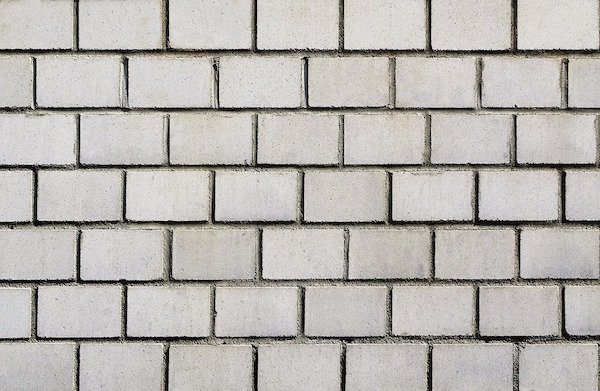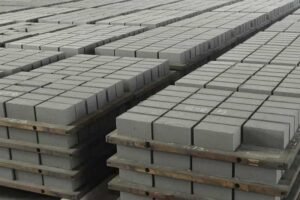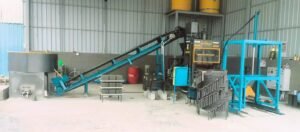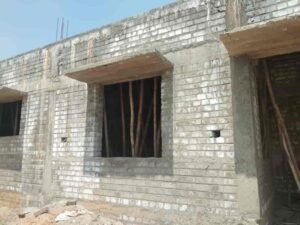Table of Contents
In the ever-evolving realm of construction, the enduring use of bricks spans centuries, standing as a testament to their reliability and versatility. Yet, as global awareness of the environmental and economic implications of construction materials grows, there is a discernible shift towards cost effective bricks and sustainable alternatives. This article aims to provide a comprehensive exploration of various types of cost effective bricks, shedding light on their unique attributes and advantages.

Types of Cost Effective Bricks:
1. Concrete Bricks: Building Strength and Efficiency
Crafted from a blend of cement, sand, and water, concrete bricks emerge as stalwarts in the construction world. Their robustness and durability make them a preferred choice. Not only are they relatively inexpensive to produce, but their smooth surface also simplifies maintenance. The added benefits of fire resistance and excellent insulation make concrete bricks a compelling option for those seeking both strength and energy efficiency in their structures.
2. Fly Ash Bricks: Repurposing Waste for Sustainability
Fly ash bricks represent a commendable initiative in sustainable construction. Formulated from a mixture of fly ash, cement, sand, and water, these bricks contribute to waste reduction from coal-fired power plants. Apart from being lightweight, they offer effective thermal insulation, reducing energy consumption and contributing to a greener environment.
3. Clay Bricks: Aesthetic Appeal and Temperature Regulation
Clay bricks, crafted from clay and fired in a kiln, have long been admired for their strength, durability, and aesthetic charm. While they come with a slightly higher price tag, their ability to regulate temperature and humidity within a building creates a comfortable living environment. The visual appeal of clay bricks, available in various colors and textures, adds an artistic touch to architectural designs.
4. Stabilized Soil Bricks: Locally Sourced and Environmentally Friendly
Stabilized soil bricks, concocted from a blend of soil, cement, and water, represent an environmentally conscious choice. Their affordability stems from the use of locally available materials, reducing the carbon footprint associated with transportation. Moreover, the simplicity of their manufacturing process allows on-site production, further minimizing environmental impact.
Advantages of Cost Effective Bricks: Beyond Affordability
1. Reduced Environmental Impact: A Green Footprint
One of the primary advantages of opting for cost-effective bricks is the diminished environmental impact. By utilizing locally available materials, the need for extensive transportation is curtailed, thereby reducing associated carbon emissions. Additionally, incorporating waste products like fly ash into brick production actively contributes to minimizing landfill waste.
2. Energy Efficiency: Saving Resources and Costs
The energy efficiency of cost-effective bricks plays a pivotal role in sustainable construction. Many of these bricks offer commendable insulation properties, reducing the energy required to heat and cool buildings. This not only results in substantial cost savings over time but also contributes to the reduction of greenhouse gas emissions, aligning with eco-friendly building practices.
3. Durability: Long-Term Cost Savings
Beyond their initial affordability, cost-effective bricks are engineered for strength and longevity. This translates to minimal maintenance requirements over time, leading to significant cost savings for building owners. Reduced repair and replacement costs make these bricks a practical and economical choice for sustainable construction projects.
4. Aesthetic Appeal: Elevating Architectural Designs
Cost-effective bricks, available in a diverse range of colors and textures, contribute not only to structural integrity but also to visual allure. This aesthetic appeal is particularly crucial for commercial structures or public spaces seeking to attract visitors. The versatility in design options allows architects and builders to create visually striking and environmentally conscious buildings.
In Conclusion: Paving the Way for a Sustainable Future
In conclusion, the choice of cost-effective bricks emerges as a pivotal decision for those aiming to build sustainably and affordably. Whether opting for the robustness of concrete, the sustainability of fly ash, the classic appeal of clay, or the eco-friendly nature of stabilized soil bricks, each option reflects a conscientious choice. As the demand for cost-effective bricks continues to rise, the construction industry can anticipate a future that seamlessly integrates sustainability and affordability, fostering a greener and more economical built environment.



